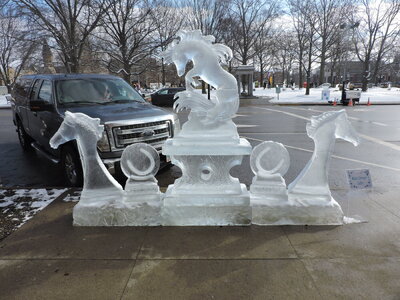- Joined
- Feb 18, 2019
- Messages
- 717
- Points
- 353

Realizing that in the end, most models built in yesteryears (including bone models), or today, by the casual average modeler is a decorative or “folk art” representation of a ship that may or may not have existed, one must accept the fact that these models will at some point be judged whether the modeler wants it or not. Furthermore, in today’s environment most active forum member has his/her work judged: but, good or not-so-good marks are not really the point here.
A “museum quality” representation entails a certain level of craftsmanship from the modeler, a good portion of research and historical data and accuracy in the way the model is built and the respect for, or adherence to certain standards, conventions and predetermined rules. I am quite convinced that maritime knowledge is not a must, your hands and brain are far more important elements given the quality of the plans available these days.
These models should be regarded as upper level examples of quality in the realm of competitive model ship building: but few make it to the top echelons. It all begins with the modeler mindset, his or her abilities complemented by the source documentation used in order to build that scale model. Individual modelers can do the work from A to Z (research – design – building) although most will use documentation compiled by a third party (books, monographs, etc…).
Competitive model ship building is divided in categories / classes to ease the modelers’ “pain” and offer individuals a shot at some recognition within the community. The higher the class or level, the higher the standards are. It may serve to minimize elitism and democratize the activity by opening a wider range of presentation levels. This democratization may be annulled by some sort of envy and unfairness in the perception of what the top classification is.
The issue is that few modelers and resulting models have what it takes to qualify for the top appellation / designation: what ever the name of the designation is. This is compounded by the fact that many modelers who are not interested in following what could be called an “underground set of rules” or having their work judged and entered into such classification have a hard time adhering to standards and conventions, whether these standards are official or not, some modelers may think that those are unfair. The people / builders who accept to live by these written or unwritten rules are all too often labeled as elitists, snobs as they are a minority compared to the rest of the model ship building community: their models can be classified as the “cream of the cream”. All this while the average modeler often over-rates their own work while they aspire to better results with the next model.
Model ship building quality, like everything else, is defined by a set of standards that must be followed, and for most casual modelers, who dares judge and label or qualify my work? Unfortunately, judging your own models by your own standards usually falls short. Few modelers are gifted enough to really achieve their higher goals.
In most cases, models end up as heirlooms: and in some cases are passed on to reluctant sons and daughters. So for the majority of builders, the most important is to enjoy the time spent building the model and to adhere to our own expectation while aiming for our own “man-cave quality” standards.
A couple links that may be of interest to some:
G.
A “museum quality” representation entails a certain level of craftsmanship from the modeler, a good portion of research and historical data and accuracy in the way the model is built and the respect for, or adherence to certain standards, conventions and predetermined rules. I am quite convinced that maritime knowledge is not a must, your hands and brain are far more important elements given the quality of the plans available these days.
These models should be regarded as upper level examples of quality in the realm of competitive model ship building: but few make it to the top echelons. It all begins with the modeler mindset, his or her abilities complemented by the source documentation used in order to build that scale model. Individual modelers can do the work from A to Z (research – design – building) although most will use documentation compiled by a third party (books, monographs, etc…).
Competitive model ship building is divided in categories / classes to ease the modelers’ “pain” and offer individuals a shot at some recognition within the community. The higher the class or level, the higher the standards are. It may serve to minimize elitism and democratize the activity by opening a wider range of presentation levels. This democratization may be annulled by some sort of envy and unfairness in the perception of what the top classification is.
The issue is that few modelers and resulting models have what it takes to qualify for the top appellation / designation: what ever the name of the designation is. This is compounded by the fact that many modelers who are not interested in following what could be called an “underground set of rules” or having their work judged and entered into such classification have a hard time adhering to standards and conventions, whether these standards are official or not, some modelers may think that those are unfair. The people / builders who accept to live by these written or unwritten rules are all too often labeled as elitists, snobs as they are a minority compared to the rest of the model ship building community: their models can be classified as the “cream of the cream”. All this while the average modeler often over-rates their own work while they aspire to better results with the next model.
Model ship building quality, like everything else, is defined by a set of standards that must be followed, and for most casual modelers, who dares judge and label or qualify my work? Unfortunately, judging your own models by your own standards usually falls short. Few modelers are gifted enough to really achieve their higher goals.
In most cases, models end up as heirlooms: and in some cases are passed on to reluctant sons and daughters. So for the majority of builders, the most important is to enjoy the time spent building the model and to adhere to our own expectation while aiming for our own “man-cave quality” standards.
A couple links that may be of interest to some:
G.









